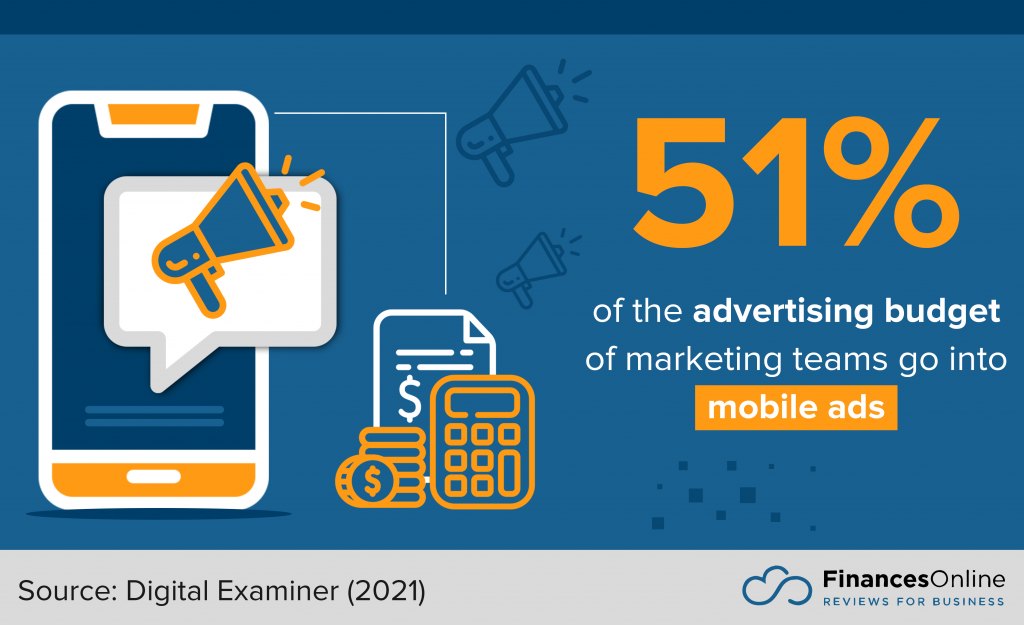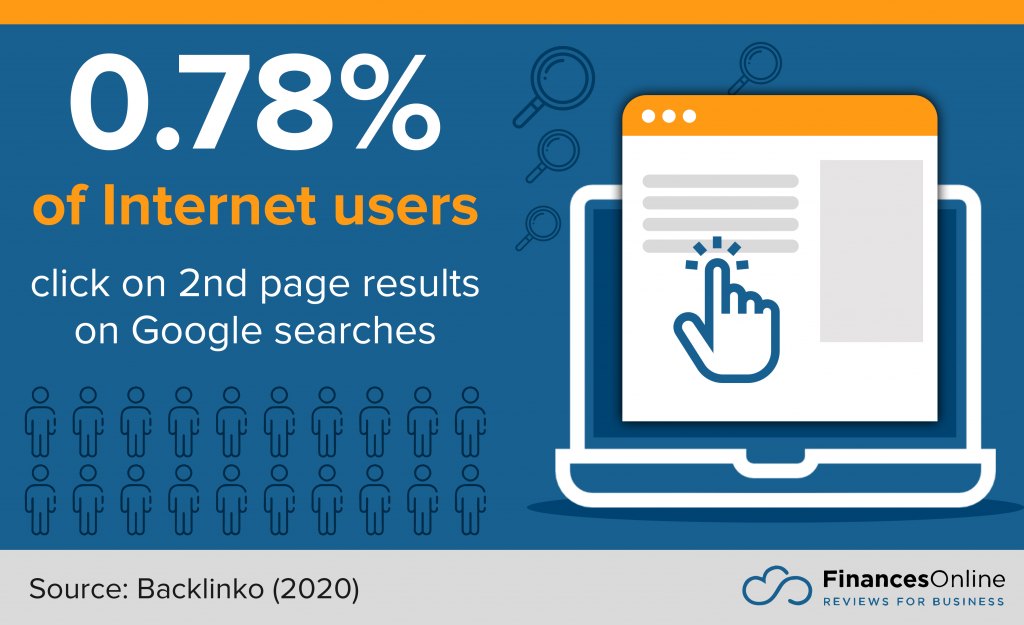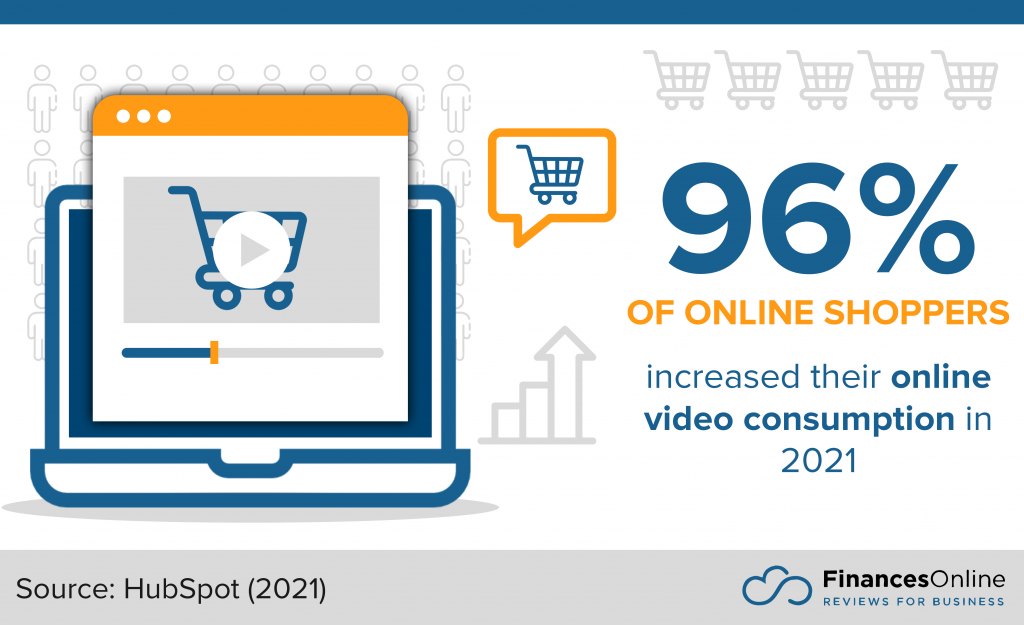The previous year was most certainly a year of transition in so many ways, especially in the marketing industry. In light of the COVID-19 pandemic, marketing teams must keep up with the constantly changing virtual and hybrid business landscapes, leveraging marketing software along the way. As most industries had to continue their operations remotely, the world of marketing had to follow suit and adapt to several technology trends that can boost marketing strategies and brand exposure.
In this post, we have culled the latest and most relevant marketing statistics you should know in 2022. Our in-depth report on marketing statistics for small business and large organizations should give you better ideas on newer and more effective marketing strategies that you can implement for your brand.

Marketing Statistics Table of Contents
Impact of COVID on Marketing Statistics
As the COVID-19 crisis lingers in the background to this day, we can say that 2022, much like the previous year, will certainly not revert back to the old normal anytime soon. The pandemic has affected the entire marketing industry in both good and bad ways—from disrupting marketing jobs to the introduction of newer marketing technology, accelerating the growth of many businesses.
For the most part, the pandemic also had a significant impact on consumer purchasing behaviors. As more people were forced to stay indoors for long periods of time, online shopping statistics skyrocketed and became more prevalent in almost every household in the world. This led businesses to offer their products online and market their brands through various online selling channels.
To stay ahead of the curve, businesses had to take their marketing strategies up a notch by implementing the latest marketing trends today. These include developing mobile apps or web pages to reach more customers and using social media to further boost brand exposure.
The marketing statistics compiled below reveal how COVID-19 changed the game for businesses and marketing teams.
- Ad spending grew by 5.9% during the COVID-19 pandemic. (eMarketer, 2020)
- Digital ad spending by telecom advertisers increased by 12.0% in 2020, reaching around $13.99 billion. (eMarketer, 2020)
- Telecom’s share of total US digital ad spending accounted for 10.4% of the ad spending market. (eMarketer, 2020)
- Search ad spending in the US grew by 14.4% during the pandemic. (eMarketer, 2020)
- By 2024, advertisers will spend $99.22 billion on search marketing. (eMarketer, 2020)
- Amazon’s net search ad revenue rose to 43% in 2020, a significant increase from 35.6% in 2019. (eMarketer, 2020)
- 69% of advertisers believed that COVID-19 had a significant impact on their ad spending. (Influencer Marketing Hub, 2020)
- 84.8% of customers are open to new digital offerings introduced during COVID-19. (Influencer Marketing Hub, 2020)
- 83.8% place value on digital experiences. (Influencer Marketing Hub, 2020)
- Marketing budgets skyrocketed to 11.4% in 2020. (Influencer Marketing Hub, 2020)
- The latest marketing statistics jobs suggest that employment in the marketing industry will grow by 10% from 2020 to 2030. (Bureau of Labor Statistics, 2021)
Source: eMarketer (2020)
Advertising Statistics
Thanks to plenty of technological advancements, the advertising industry has long since moved on from traditional print ads and TV spots. Online advertising, content marketing, and social media are now dominating modern advertising and marketing strategies.
Due to the uncertainties brought by the COVID-19 pandemic, ad spending dipped by 1.3% in 2020, reaching $249 billion in North America. However, it is expected to rise again and return to pre-pandemic levels, reaching over $378 million by 2024 (Zenith, 2021).
Latest advertising statistics and data also suggest that using digital channels as advertising platforms are now more evident than ever. As a result, businesses are investing more on digital advertising and less on traditional media, such as newspapers and magazines.
Here are some of the newest advertising and marketing statistics 2022 that you should know about.
- With 37.2%, Google held the largest share of digital ad spending in the United States. (eMarketer, 2021)
- Facebook followed suit with 19.6% total ad spending. (eMarketer, 2021)
- 70–80% of Internet users ignore brands that appear on sponsored search results. (Search Engine Land, 2021)
- 76% of marketers fail to use consumer behavior data for online ad targeting. (AdWeek, 2021)
- In 2020, the largest advertising market in the world was the United States, with an ad spending worth $242.54 billion. (Small Biz Trends, 2020)
- In 2021, the total media ad spending reached $455.30 billion. (eMarketer, 2021)
- 81% of Internet users still use ad blockers to avoid annoying and disruptive ad experiences. (Blockthrough, 2021)
- Almost 36% of clicks in American ads come from overseas Internet users. (Google Economic Impact, 2021)
- 86% of all ad campaigns resulted in profits. (Top Media Advertising, 2021)
- 73% of customers hate pop-up advertisements. (Hive Life, 2021)
Motivation for Using Ad Blockers
To avoid interruptive/annoying ad experiences: 81%
To avoid interruptive/annoying ad experiences
81%To protect myself from malware: 62%
To protect myself from malware
62%To protect my privacy: 58%
To protect my privacy
58%To save device battery: 23%
To save device battery
23%Source: Blockthrough (2021)
Designed bySocial Media Marketing Statistics
If you are not yet following the latest social media trends to market your brand, then you are running the risk of getting left behind by your competitors. After all, more people are using social media nowadays, so this means you can reach a lot of people to increase sales and drive website traffic through social media marketing.
Today, most businesses use social media platforms to build their brands and engage their prospects. Whether it’s on Facebook, Twitter, Instagram, or LinkedIn, a brilliant social media marketing strategy can help you build and maintain brand awareness.
Social media also gives you a chance to follow customer behavior and be more informed about your target audience. By understanding the likes and dislikes of your customers, you can create a better marketing strategy to attract more sales in the future.
Below is a compilation of the latest and most relevant marketing statistics for social media today.
- 4.55 billion – the number of people active on social media in 2021. (Kepios, 2021)
- 1.3 million – the number of new users joining social media every day. (Hootsuite, 2020)
- 1.93 billion – the number of active users on Facebook every day in 2021. (Statista, 2021)
- For 85% of businesses, short videos are the most effective type of social media content. (HubSpot, 2021)
- In 2022, 64% plan to invest on short-form videos. (HubSpot, 2021)
- For 83% of marketers, quality is more important than quantity when it comes to social media posts. (HubSpot, 2021)
- 70% of marketers use Facebook ads to promote their products or brands. (Social Media Examiner, 2021)
- Meanwhile, 79% of marketers plan to invest on Twitter Spaces in 2022. (HubSpot, 2021)
- 98% of marketers believe that Instagram is the most influential platform for influencer marketing. (Sprout Social, 2021)
- 44% of marketing teams plan to leverage YouTube for the first time in their marketing strategies. (HubSpot, 2021)

Brand Marketing Statistics
In the past, branding was simply a name, sign, slogan, or symbol that customers associate you with. Today, however, branding is so much more complicated for modern businesses. With so many brands vying for customers’ attention, all sorts of brand marketing strategies have come up just to give businesses a distinctive personality that consumers will remember for a long time.
Brand marketing involves a lot of identifying your company’s personality and how you want your customers to perceive your organization. Depending on how you want people to feel about your brand, you have to carefully choose your logo, business colors, typography, illustrations, and even the content you distribute in various marketing channels.
A successful brand marketing strategy allows you to attract new and repeat customers and generate more sales. For better ideas on what to incorporate into your branding strategy, check out these brand marketing statistics 2020 and beyond.
- Consistent brand exposure results in increased revenue of up to 23%. (Small Biz Genius, 2021)
- 72% of the best brand names are usually acronyms or made-up words. (Small Biz Genius, 2021)
- 82% of customers feel more positive when a brand creates personalized content. (Demand Metric, 2021)
- Brands that create more blog posts generate 67% more leads. (BrandBuddah, 2021)
- It takes about 5 to 7 impressions before people start to remember your brand. (Pam Moore, 2021)
- 89% of customers trust brands that emphasize their core values. (Fundera, 2021)
- 21% of shoppers prefer to buy from brands that they like. (Invesp, 2021)
- Meanwhile, 59% of customers purchase products from brands that are familiar to them. (Invesp, 2021)
- 86% of shoppers factor in the authenticity of a brand when deciding which ones to like and support. (Oberlo, 2021)
- 73% of shoppers also prefer trust and prefer brands that offer personalized shopping experience. (WPForms, 2021)
Shoppers' Behavior by Brand Preference
Source: Invesp (2021)
Designed byMost Popular Marketing Software
- HubSpot Marketing. An all-in-one marketing hub that enables marketers to manage all their marketing efforts more effectively to grow traffic and boost conversion. Read our review to find out more about HubSpot Marketing pricing and features.
- Pardot. A marketing automation software with intelligent lead generation and sales alignment tools for B2B companies to manage their online campaigns with ease. Look at this Pardot pricing and features review to see its complete list of functions.
- monday.com. A comprehensive project management, collaboration, and CRM platform that can be used to streamline marketing workflows. Read our detailed review to find out more about monday.com pricing and capabilities.
- Marketing Creatio. A multichannel marketing system designed to optimize all stages of lead management, from collection to nurturing. Find out more about Marketing Creatio pricing in our detailed review.
- TUNE. An innovative partner marketing software built to help businesses create effective partner programs and networks. Read more about TUNE pricing to find out if it fits your bill.
Mobile Marketing Statistics
As the market penetration for mobile devices continues to increase every year, so does the growth of the mobile marketing industry. From $65 billion in 2019, it is expected to reach almost $337 billion in 2027 (Grand View Research, 2020). To increase impact and approachability in terms of target users, most businesses are now implementing mobile marketing strategies.
Through mobile marketing, companies can reach more customers on the go, especially those who have no immediate access to laptops or desktop computers. Here are the latest and most interesting mobile statistics that we have uncovered throughout some marketing statistics course of studies.
- In 2021, there were over 280 million Americans using their phones to access the Internet. (SemRush, 2021)
- Android is the leading mobile operating system in 2021 with a 71.93% market share. (SemRush, 2021)
- In the US, Internet users spend 49% of their time in social networking sites, such as Facebook, Instagram, WhatsApp, and Messenger. (SemRush, 2021)
- In 2020, the US is the leading mobile ad spending market with a share of $120.4 billion. (SemRush, 2021)
- 31%, or $47.8 billion of retail spending in 2020 was made through mobile devices. (SemRush, 2021)
- 83% of Internet users accessed social media apps using mobile devices. (SmartInsights, 2021)
- Mobile advertising will soon account for over 50% of the global ad spending marketing, overtaking desktop advertising and becoming the primary means of content consumption for Internet users. (Digital Examiner, 2021)
- 51% of the advertising budget of marketing teams went to mobile ads. (Digital Examiner, 2021)
- 53% of all paid-search clicks were from mobile device users. (Digital Examiner, 2021)
- 66.6%, or 5.22 billion people, use their mobile devices as part of their everyday life. (Digital Examiner, 2021)

SEO Marketing Statistics
Marketing professionals today will tell you that SEO is one of the most important elements of a successful digital marketing strategy. A good SEO management can drive your website to higher rankings in SERPs, allowing for organic search traffic and greater visibility on the Internet. By complying with the latest SEO best practices, you can effortlessly sustain traffic on your site and make your brand more relevant to Internet users.
Currently, SEO is already at the center of marketing, technology, and user-focused approaches. As digital markets experience rapid growth year after year, however, the importance and prominence of SEO is set to continue in the future.
Below are some of the latest SEO statistics to help you get a clearer view of where it stands in the marketing industry today.
- 70% – share of Google searches in the total global desktop search traffic. (ImpactPlus, 2021)
- 13% – share of Baidu searches in the total global desktop search traffic. (ImpactPlus, 2021)
- 12% – share of Bing searches in the total global desktop search traffic. (ImpactPlus, 2021)
- 2% – share of Yahoo searches in the total global desktop search traffic. (ImpactPlus, 2021)
- 55.24% of web pages do not have backlinks. (ImpactPlus, 2021)
- For 36% of SEO experts, the title tag/headline is the most important SEO element in a web page. (ImpactPlus, 2021)
- Only 0.78% of Internet users click on 2nd page results on Google searches. (Backlinko, 2020)
- 90.63% of web pages are not getting any organic search traffic from Google. (Ahref, 2020)
- Almost 92.42% of all keywords get at least 10 monthly searches. (Ahref, 2020)
- Google records 3.5 billion searches on Google each day. (Internet Live Stats, 2020)

Audio and Video Marketing Statistics
Another way you can define your brand is through audio and video marketing. Some of the most effective brand marketing guides will tell you that consumers love personalized content. Thus, custom audio and video media should help you attract the attention of potential customers. Some popular forms of audio and video marketing that you can use are radio, podcasts, and online videos posted in various social networking sites.
Personalized audio and video marketing can increase your target audience and even improve sales. Investing in high-quality media content also helps you boost your brand’s number of engagements from potential buyers. By distributing your content in various social media channels, you can generate more leads and drive traffic to your website.
To create more engaging and effective media content, here are some audio and video marketing statistics you should consider.
- 96% of online shoppers increased their online video consumption. (HubSpot, 2021)
- 9 out of 10 viewers revealed that they want more video content from businesses and brands that they like. (HubSpot, 2021)
- Online videos will soon take up 82% of all consumer Internet traffic. (CISCO, 2021)
- 83.8% of Internet users accessed digital video content in 2021. (Hospitalitynet, 2021)
- Marketers grow revenue 49% faster when they use videos as marketing content. (WordStream, 2021)
- 82% of the global Internet traffic will come from video streaming and downloads. (CISCO, 2021)
- Almost one-third of all online activity is spent watching videos. (WordStream, 2021)
- In 2022, an average person will spend 100 minutes per day watching online videos. (Zenith Media, 2021)
- 83% of video marketers believe that video content has helped increase the time that visitors spend on their websites. (Wyzowl, 2020)
- 78% – share of people watching videos online every week. (Social Media Week, 2020)
- 55% – share of people who view online videos every day. (Social Media Week, 2020)
- 54% – share of people who want to see more videos throughout the year. (Social Media Week, 2020)
- Radio marketing reaches a total of 92% of Americans per month. (News Generation, 2021)
- According to the latest marketing statistics on Spotify, the app generated $851 billion in revenue. (Backlinko, 2020)

Marketing Technology Statistics
More businesses and marketing professionals are recognizing the potential of marketing technologies (also often referred to as martech) in various industries. As a result, marketing automation, optimization tools, and the like currently stand at the forefront of the world of digital marketing.
For a more efficient and effective marketing strategy, most businesses leverage a marketing technology stack—a range of modern solutions that can boost their marketing efforts across different marketing channels. This often include marketing attribution software, email marketing, content management systems, and more.
The following marketing statistics example below should give you a clearer picture of the martech industry growth.
- Global industry professionals chose Hubspot, Adobe Experience Cloud, and Oracle Marketing Cloud as their top 3 marketing automation solutions in 2021, accounting for over 50% of the market. (Datanyze, 2021)
- 25.5% – growth rate of marketing technology solutions for managing customer data. (MarTech, 2020)
- 15.2% – growth rate of marketing technology solutions for marketing management. (MarTech, 2020)
- 13.7% – growth rate of marketing technology solutions for social and customer relationship management. (MarTech, 2020)
- 26.26% of brand marketers in the world expected their marketing technology budgets to increase by 6% to 190%. (MarTech, 2020)
- In 2020, there were over 8,000 martech solutions available worldwide. (BDO, 2020)
- 51% of businesses are already using marketing automation solutions. (Emailmonday, 2021)
- Meanwhile, 58% of B2B companies plan to adopt marketing automation technology. (Emailmonday, 2021)
- By 2027, the global marketing automation market size could reach $8.42 billion. (Research and Markets, 2020)
Growth Rate of Marketing Technology Solutions
By Function in 2020
Solutions for managing customer data: 25.5%
Solutions for managing customer data
25.5%Solutions for marketing management: 15.2%
Solutions for marketing management
15.2%Solutions for social and customer relationship management: 13.7%
Solutions for social and customer relationship management
13.7%Source: MarTech (2020)
Designed byA Digital Future for Marketing
So there you have it—the latest marketing statistics to help you better understand the scope of the marketing industry and where it is headed. As a business owner or a marketing professional, you must always keep in mind the latest developments in the marketing niche and leverage them for the benefit of your organization.
In a nutshell, the marketing industry is gearing toward digital transformation with the help of social media channels and the latest technological developments. Now, if you are starting to build or upgrade your current marketing strategy, be sure to check out our guide to the best marketing software in the market today.
References:
- AdWeek. (2021, January 28). The 45 Most Important Advertising Statistics of 2021. AdWeek.
- Ahrefs. (2020, June 15). 63 SEO Statistics for 2021. SEO Blog by Ahrefs.
- Backlinko. (2021, June 15). 63 SEO Statistics for 2021. SEO Blog by Ahrefs. Backlinko.
- BDO. (2020). Expected change in marketing technology budgets worldwide in 2020. BDO.
- Blockthrough. (2021). The Rise of Consent-based Advertising. Blockthrough.
- Brand Buddah. (2021, October 4). 50+ Eye-Opening Branding Statistics – 2021 Edition. Brand Buddah.
- Bureau of Labor Statistics. (2021, September 8). Advertising, Promotions, and Marketing Managers : Occupational Outlook Handbook: : U.S. Bureau of Labor Statistics. BLS.
- CISCO. (2021, March 5). 135 Video Marketing Statistics You Can’t Ignore in 2022. InVideo – Online Video Creator for Content and Marketing Videos. CISCO.
- Datanyze. (2021). Marketing Automation Market Share Report | Competitor Analysis | HubSpot, Active Campaign, Adobe Experience Cloud. Datanyze.
- Demand Metric. (2021). The Impact of Brand Consistency Benchmark Report. Demand Metric.
- Digital Examiner. (2021, March 30). Mobile marketing statistics compilation. Digital Examiner.
- Emailmonday. (2020, November 29). Email Marketing Consultant & specialist with 10 years of experience. Email marketing consultant | Emailmonday.
- eMarketer. (2021, April 29). Worldwide Digital Ad Spending 2021. eMarketer.
- eMarketer, E. (2020, September 17). Pandemic? Recession? Telecoms Keep on Advertising. eMarketer.
- eMarketer, N. (2020, November 9). The pandemic promises search ad spending short-term pain but long-term gain. eMarketer.
- Fundera. (2021, October 26). 51 Branding Statistics You Need to Know In 2021. Fundera.
- Google Economic Impact. (2021, December 5). 67+ Fascinating Advertising Statistics for 2022. Google Economic Impact.
- Grand View Research. (2020). Mobile Marketing Market Size | Industry Trend Report, 2020–2027. Grand View Research.
- Hive Life. (2021, December 5). 67+ Fascinating Advertising Statistics for 2022. Hive Life.
- Hootsuite, S. (2021, October 22). TikTok Hits 1 Billion Users—Faster Than Facebook (And More New Stats). Social Media Marketing & Management Dashboard. Hootsuite.
- Hospitalitynet. (2021, February 13). Is Long-Form Video on Social Media the New TV?. Hospitalitynet.
- HubSpot. (2021a, April 9). What Video Marketers Should Know in 2021, According to Wyzowl Research. H. HubSpot.
- HubSpot. (2021b, November 15). 80+ Essential Social Media Marketing Statistics for 2022. HubSpot.
- ImpactPlus. (2021, November 12). 31 SEO statistics for 2021 and what they tell us (+ VIDEO). IMPACTPLUS.
- Influencer Marketing Hub, W. (2020, August 23). Coronavirus (COVID-19) Marketing & Ad Spend Report (Updated July 2021). Influencer Marketing Hub.
- Internet Live Stats. (2020, July 1). 10 Google Search Statistics You Need to Know in 2021 | Oberlo. Internet Live Stats.
- Invesp. (2021, April 11). How Branding Influences Purchase Decisions [Infographic]. Invesp.
- Kepios. (2021). Global Social Media Stats. DataReportal – Global Digital Insights. Kepios.
- MarTech. (2020, October 6). 2020 Marketing Technology Landscape features 8,000 tools, goes interactive. MarTech.
- News Generation. (2020, January 22). Radio Facts and Figures | News Generation | Broadcast Media Relations. News Generation.
- Oberlo. (2021, August 2). 10 Branding Statistics You Need to Know in 2021 [Infographic]. Oberlo.
- Pam Moore. (2021, October 4). 50+ Eye-Opening Branding Statistics – 2021 Edition. Pam Moore.
- Research and Markets. (2020). Marketing Automation Market Size, Share & Trends Analysis Report by Solution (Email, Social Media), by Deployment (On-premise, Cloud), by Enterprise Size, by End Use, by Region, and Segment Forecasts, 2020 – 2027. Research and Markets Ltd 2021.
- Search Engine Land. (2021, January 28). The 45 Most Important Advertising Statistics of 2021. Search Engine Land.
- SemRush. (2021, March 15). Mobile Marketing Statistics: 74 Statistics To Help You Create The Ultimate Mobile Marketing Strategy. Semrush.
- Small Biz Trends. (2020, December 28). Advertising Statistics You Must Know. Small Business Trends.
- SmallBizGenius. (2021, October 4). 50+ Eye-Opening Branding Statistics – 2021 Edition. SmallBizGenius.
- SmartInsights. (2021, March 30). Mobile marketing statistics compilation. SmartInsights.
- Social Media Examiner. (2021, October 12). Social Media Marketing Industry Report. Social Media Examiner.
- Social Media Week. (2020, October 30). 2020 Video Marketing and Statistics: What Brands Need to Know. Social Media Week.
- Sprout Social. (2021, September 28). The most important Instagram statistics you need to know for 2021. Sprout Social.
- Top Media Advertising. (2021, December 5). 67+ Fascinating Advertising Statistics for 2022. Top Media Advertising.
- WordStream. (2021, November 23). 75 Staggering Video Marketing Statistics for 2021. WordStream.
- WPForms. (2021, January 5). The Ultimate List of Online Business Statistics (2022). WPForms.
- Wyzowl. (2020). Video Marketing Statistics 2021 (Brand New Data). Wyzowl.
- Zenith Media. (2021, September 13). Online video viewing to reach 100 minutes a day in 2021 –. Zenith Media.























Leave a comment!